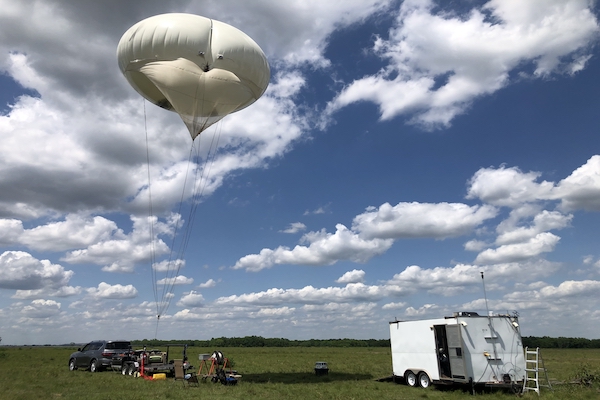Chakrabarty to study vertical distribution of aerosol properties
The research project by Rajan Chakrabarty and collaborators Rohan Mishra and Alexander Laskin is supported by the DOE’s FICUS program

Rajan Chakrabarty, the Harold D. Jolley Career Development Associate Professor in the McKelvey School of Engineering at Washington University in St. Louis, is one of 13 scientists who recently received funding through the U.S. Department of Energy’s (DOE) Facilities Integrating Collaborations for User Science (FICUS) program. With an $80,000 grant, Chakrabarty will study land-atmosphere processes and aerosol-cloud interactions at the DOE’s Environmental Molecular Sciences Laboratory (EMSL) and Atmospheric Radiation Measurement (ARM) facilities. The work will complement Chakrabarty’s ongoing DOE-funded project to improve measurement tools for aerosol light absorption.
Chakrabarty and collaborators Rohan Mishra, associate professor of mechanical engineering & materials science in the McKelvey School of Engineering, and Alexander Laskin, professor of analytical chemistry at Purdue University, will explore how physical and chemical properties of aerosols are distributed vertically in the air by studying individual atmospheric particles collected by ARM’s tethered balloon system. The work is part of the DOE’s Tracking Aerosol Convection Experiment (TRACER) campaign.
“Using the state-of-the-art facilities at EMSL, we will characterize a wide range of aerosol chemical and physical properties in detail as a function of altitude, sampled during the TRACER campaign in Houston, Texas, during the summer of 2022,” Chakrabarty said. “The project will enable us to understand the composition of particles that can act as cloud condensation nuclei over the Houston area.”
The team plans to conduct systematic chemical imaging studies of the composition and physical properties of airborne particles. This analysis will support their study of how natural and anthropogenic sources contribute to aerosol population during representative meteorological conditions and which particles tend to act as cloud condensation nuclei. The results of this research are expected to provide critical feedback to further develop and evaluate atmospheric models.
Click on the topics below for more stories in those areas
- Research
- Brief
- Mechanical Engineering & Materials Science
- Energy, Environmental & Chemical Engineering





